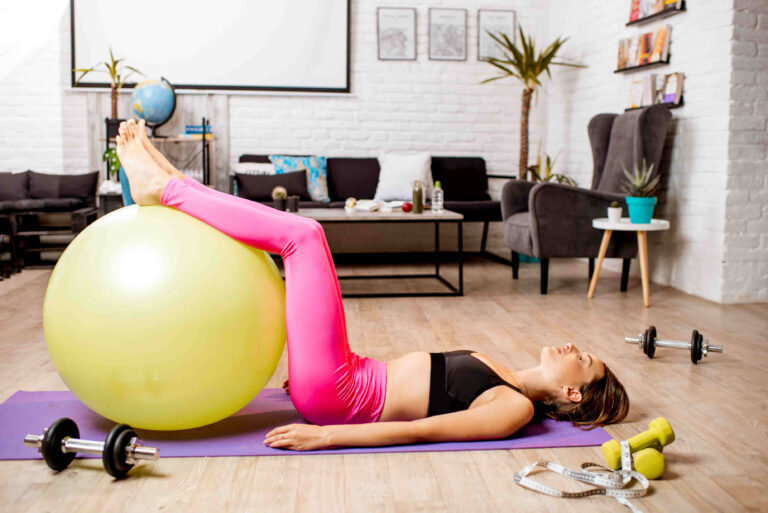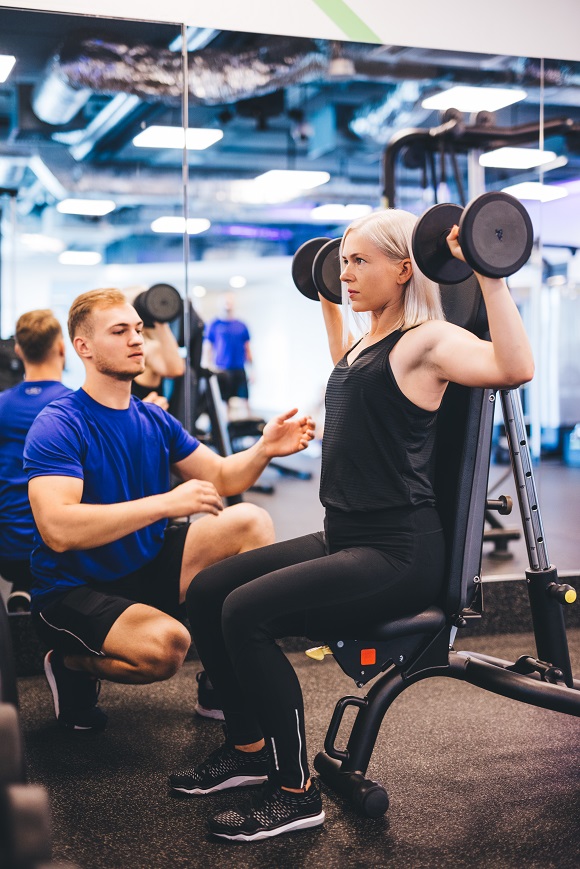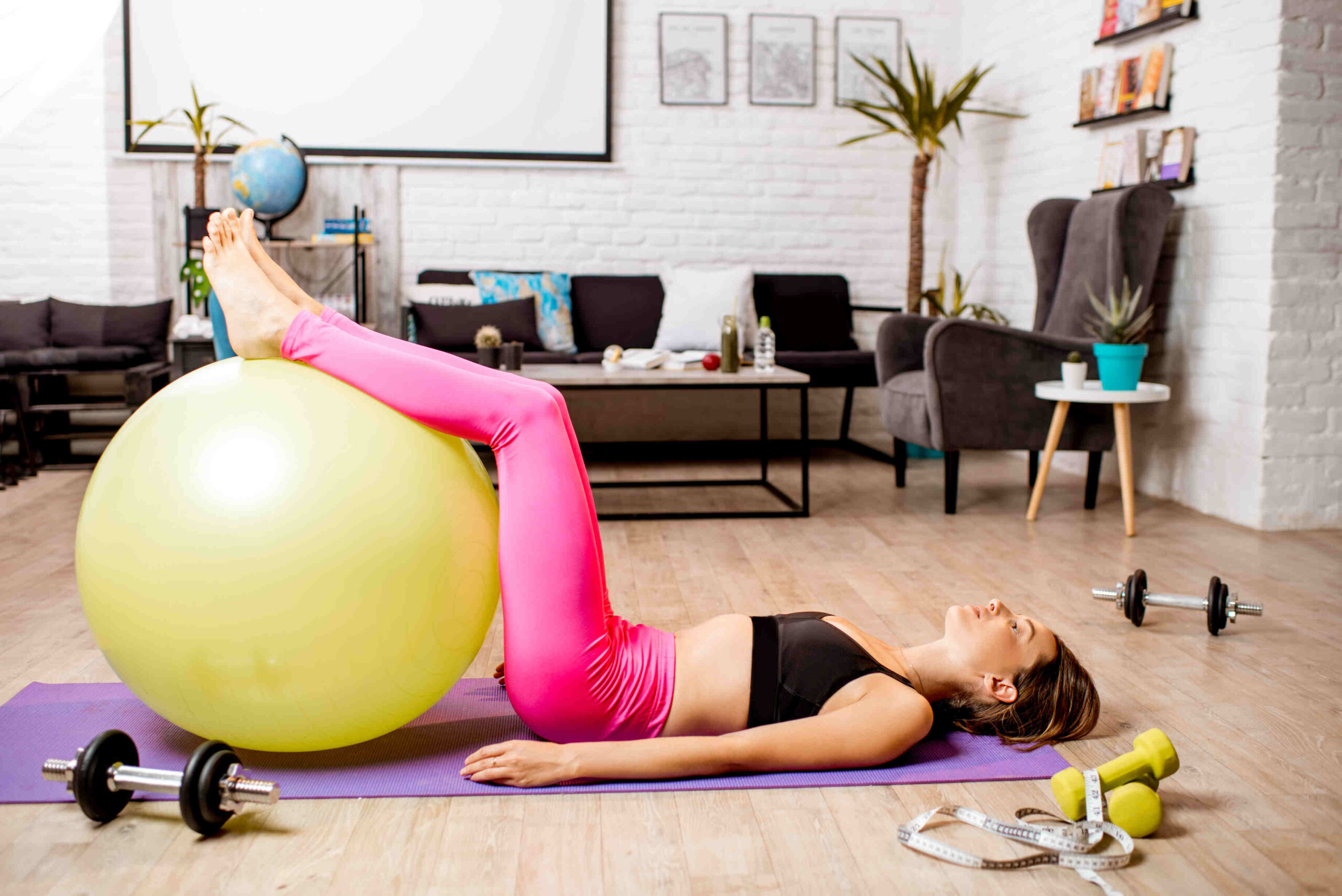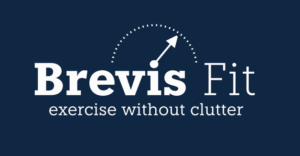Introduction
Starting a home workout journey is an exciting step toward improving your fitness and overall well-being. Home workouts offer the convenience and flexibility to exercise on your schedule, but they also require a strong focus on safety to prevent injuries and ensure long-term success. Creating a safe workout environment and understanding your body’s capabilities and limitations are crucial to an effective fitness routine.
Safety in home workouts is not just about avoiding accidents; it’s about optimizing your exercise regimen to achieve the best possible results. By prioritizing safety, you lay the groundwork for a sustainable fitness journey that keeps you motivated and injury-free. This approach empowers you to push your limits safely and effectively, allowing you to reap the full benefits of your efforts.
This guide will explore essential aspects of maintaining safety during home workouts. From setting up your workout space and choosing the right equipment to understanding the importance of warm-ups, proper form, and listening to your body, each section provides practical tips to enhance your home exercise routine. Following these guidelines can create a productive and enjoyable workout experience that supports your health and fitness goals.
Importance of Safety in Home Workouts
Before diving into a new exercise routine, it’s crucial to prioritize safety. Ensuring that your workouts are safe prevents potential injuries and sets the foundation for long-term success in reaching your fitness goals.
Creating a safe workout environment involves more than just having the right equipment; it’s about understanding your body’s capabilities and limitations. By focusing on safety, you’re laying the groundwork for a sustainable fitness routine that will keep you motivated and injury-free in the long run.
Safer workouts are more efficient workouts
Remember, safety is not a restriction but a tool to empower you in your fitness journey. By implementing safety measures from the start, you’re setting yourself up for success and ensuring you can enjoy the benefits of home workouts for years. A safe workout does not limit the potential benefits of exercise. A safer workout is a more effective workout. That is primarily because a safe workout allows you to fatigue your muscles most efficiently [1].
Common Home Workout Injuries and How to Prevent Them
While home workouts offer convenience and flexibility, they also have potential risks if safety measures are not taken seriously. Common injuries such as strains, sprains, and overuse injuries can occur when exercises are performed incorrectly or without proper precautions.
Injuries due to lack of control
Important to note is that the intensity of Exercise does not increase the chances of injury. What does lead to injuries within performing an activity is the amount of control over the resistance you can impose and the range of motion. Throwing the weights up and down and not avoiding extreme ranges of motion is the best predictor for injuries. With this, most of the force is on your joints and ligaments instead of the targeted muscles. This, in turn, leads to more work being required to fatigue the muscle sufficiently, meaning more and more load on those areas. This leads to an unproductive and injury-prone workout routine [2].
Accidents and falls
However, in addition to injuries that occur within the exercise movement due to incorrect form or a lack of control over the resistance, injuries can also occur due to unsafe tools, unstable surfaces, and reduced control over the movement. These injuries can, however, be much more severe than the injuries from the movements themselves. Therefore, avoid using unstable surfaces like bosu as they increase the chances of falls. Be careful with elastic bands and ensure they are not torn or damaged, as they can break apart when stretching them, hitting you in the process. When using a dumbbell or barbell, make sure the plates are locked into position, and if possible, use a safety rack to prevent being stuck under a heavy barbell.
Uneven muscular development
Finally, injuries can also occur over time. Overuse injuries, such as tendonitis or stress fractures, can result from repetitive movements without adequate rest or recovery. Be sure to fatigue all the body’s major muscle groups with equal focus and incorporate rest days. An efficient exercise program can achieve a lot with only 20 to 40 minutes per week. This frees up your time, increases your strength, and reduces the strain on your joints. With a routine we recommend and employ, all three causes of injuries can be mostly eliminated.

Preparing Your Workout Space and Equipment
Setting up a designated workout space in your home is key to creating a conducive environment for safe and effective exercise. Choose an area with enough room to move freely and ensure that it is well-lit and adequately ventilated. Clear any obstacles or clutter that could pose a tripping hazard during your workout. However, a smart and efficient workout program only requires a little space. You need just sufficient room to move your body and limbs freely.
A home routine does not require sophisticated equipment
Initially, you can design a very efficient workout program relying on only body weight exercises. Later, you will need some equipment that increases the challenge. When it comes to equipment, quality and functionality are essential for both safety and performance. For home workouts with minimal equipment, rely on a good dumbbell set or quality resistance bands, or even better, get yourself towing straps and leverage static contractions. The latter will serve as cheap and very robust equipment, allowing you to provide unlimited resistance using the static contraction protocol.
Add non-slip mats and use padding for better movement control and comfort
Additionally, consider adding non-slip mats or padding to your workout space to prevent slips and cushion impact during high-intensity exercises. Properly setting up your space and choosing the right equipment creates a safe and supportive environment for your home workouts.
Remember, safety starts with preparation. By dedicating time to organize and equip your workout space, you invest in your health and well-being every time you step into your home gym.

Choosing the Right Exercises
Selecting the appropriate exercises for your fitness level is crucial in ensuring a safe and productive home workout. Whether you’re a beginner or have some experience with exercise, there are always principles that define a particular movement as more or less risky. There is no real benefit to choosing more complex technical exercises, no matter your experience level. Safe movements will always be the best choice, as they allow you to focus on the muscles, fatigue them efficiently, and avoid or prevent dangerous ranges of motion [5].
Focus primarily on basic compound exercises
Start by assessing your strengths, weaknesses, and any physical limitations you may have. Choose exercises that target multiple muscle groups and focus on movements that efficiently and safely target multiple synergistic muscle groups simultaneously, i.e., compound movements [8], [9]. A great first choice is movements like squats, rows, and different pressing forms.
Leverage isolation exercise
If you notice the targeted muscles lacking engagement, try adding isolation exercises. Here, you increase the physical and mental focus to only one muscle group, which helps you achieve deep levels of muscular fatigue faster and more efficiently. An excellent example of such movements targeting the neck, wrists, and calve muscles.
Target deep stabilizers without unstable surfaces
Finally, if you need to exercise the deep stabilizer muscles of the shoulders, hips, and ankles, avoid tools that reduce your stability, such as Bosu balls. Instead, prioritize exercises, allowing controlled and precise movements that fatigue that muscle group. Such movements include internal/external shoulder rotation, wall deadlifts, and hip ab- and ad- duction. However, avoid combining such movements with exercises targeting the superficial muscles. This only increases the danger of placing the load intended for the big and strong superficial muscles on the weaker stabilizer muscles. The deep stabilizers are not intended for load bearing and can, therefore, spasm if overloaded. Rather than that, perform the deep stabilizer muscles at the beginning of the workout and continue with your regular movements afterward.
Proper Form and Technique
Maintaining proper form and technique during home workouts is essential for maximizing results and preventing injuries. Each exercise has a specific set of movements and alignment cues that, when followed correctly, target the intended muscles and reduce strain on joints.
Keep in mind your body posture
Focus on posture alignment and core engagement throughout your workouts to ensure you’re working the right muscles and minimizing the risk of injury. If you need help with the correct form for a particular exercise, consider seeking guidance from online tutorials or fitness professionals, such as ourselves.
Avoid momentum
When performing strength training exercises, control the movement through the entire range of motion and avoid using momentum to lift weights. Especially at the beginning of your Exercise journey, focus on improving the technique and the mind-muscle connection. The better you can control and voluntarily engage the targeted muscles, the less resistance and special equipment you require [10], [11].
Remember, quality over quantity is key when it comes to exercise. Prioritize proper form and technique over the number of repetitions or amount of weight lifted to protect your body and achieve optimal results from your home workouts.
Warm-up and Stretching
Preparing your body with a proper warm-up and stretching routine is essential before your main workout. Warm-up exercises help increase blood flow to your muscles, making them more pliable and reducing the risk of injury during your workout.
Correct Exercise has a built-in warm up
However, this does not mean that a safe, efficient, and intense workout requires a dedicated warm-up routine, at least not when doing (correct) Exercise [2], [3], [4]. As mentioned above, a warm-up increases blood flow to the working muscles. When performing correct Exercise, we move slowly and under control and avoid dangerous ranges of motion [1], [5]. And most importantly, we are seeking to reach the point of momentary muscular failure as efficiently as possible [6]. This entails that we gradually fatigue the target muscles within a time interval of 60 – 120 seconds.
Only the last few seconds of a working set are of high-intensity
If the resistance is selected correctly, we should reach the point of failure within that interval. However, the first 75% of the Exercise is low-intensity, as we gradually fatigue our muscles to reach the point of failure i.e. the resistance is easy enough to exercise for at least 60 seconds continuously. Only when closing up to the point of momentary muscular failure it becomes challenging. So, a very big portion of the Exercise itself is the warm-up. Only the last 10 or 20 seconds are intense but much more meaningful. But at that time, we were also much weaker than at the beginning of the exercise set. And this makes it much harder to injure ourselves, as we are too weak to generate high amounts of force. Because of this protocol, no additional warm-up is required for a particular Exercise. Each set of exercises (and we recommend doing just one) already includes all the required warm-ups.

Correct Exercise focuses on maximum muscular fatigue instead of maximum performance
Correct exercise is in stark contrast to performing weight lifting, powerlifting, or CrossFit, where the goal is to overcome the heaviest resistance as fast as possible. There, we start from the beginning of each repetition with maximum intensity; however, this requires a separate warm-up routine. Besides being more time-consuming, these protocols are more injury-prone, as they rely on you being the strongest at each repetition. You are encouraged to produce and sustain as high of a force as possible. In contrast, correct Exercise strives to establish deep muscular fatigue as soon as possible, which makes the muscles too weak to injure you.
Add daily stretching if you have a stationary lifestyle
Stretching is not an essential part of an effective Exercise routine. However, if you have a stationary occupation, we recommend a daily stretching routine to offset the static postures and corresponding muscle tightness that occur because of them [7].

Cooling Down and Recovery
After completing your home workout, it’s essential to dedicate time to cooling down and supporting your body’s recovery process. A proper cooldown routine helps gradually lower your heart rate and prevent blood pooling in your muscles, reducing the risk of dizziness or muscle cramps. In the workouts we recommend, there are three aspects of cooling down.
Cool down while exercising by breathing
The first type of cooling happens within Exercise through breathing. However, there is no specific breathing technique you should adhere to. Breathing during Exercise should happen at a natural pace and on demand. The higher the intensity, the more breathing is required. Avoid holding your breath for the more intense sections of the exercise, i.e., closing to the point of momentary muscular failure. Avoid tensing your face or other muscles not intended to be worked at through the training. If possible, exercise in a climate-controlled environment.
Relax your muscles by gradually reducing the intensity at the end of the working set
The second is the period right after completing an exercise. You must reduce your exertion slowly and under control, not abruptly. In the case of dynamic repetitions, lower the resistance slowly and under control. Do not just let go of the dumbbells or the equipment as soon as you have reached momentary failure. If you leverage static contractions, apply the same principle. Rather than abruptly stopping to contract the muscles, release the tension and contraction force gradually to a relaxed state. After completing the exercise, take a moment to let your breathing normalize, and then continue to the next exercise. However, keep rest periods between exercises short, preferably under a minute for a more effective cardiovascular workout. This helps maintain an elevated heart rate and enhances cardiac perfusion [12, Para. The benefit of Exercise for heart health].
Stabilize your heart rate after the workout and enjoy your post-workout meal
Finally, after the workout, you should take a few minutes to break and let your breathing and heart rate normalize even further. This should take around 30–60 minutes. Later, you should have something to eat. In the first meal, focus on quality protein and sodium, but avoid too many calories. Specifically, since your digestion is not yet ready to work at its total capacity. Examples of good recovery meals can be eggs, meat, or a quality whey protein shake. After a couple of hours, you should proceed to have a meal that fits your appetite level. Focus here on quality protein, sodium, and fatty acids to aid recovery.
Remember, recovery is just as important as the workout itself. By cooling down properly and supporting your body’s recovery process, you’re setting the stage for continued progress and success in your fitness journey.

Listening to Your Body and Avoiding Overtraining
One of the most important aspects of staying safe during home workouts is listening to and respecting your body’s signals. Your body communicates through sensations such as muscle fatigue, discomfort, or pain, indicating when it’s time to push harder or ease off. Some of these signal are signs of exercise intensity, while others can denote an injury in the making. So distinguishing them is of crucial importance.
When performing exercise, we strive to achieve deep muscular fatigue. This will inevitably lead to discomfort in the muscles due to lactic acid build-up and increased blood flow. Some muscle groups are more prone to such sensations as they include more nerve connections. Still, the sensations of fatigue are normal and beneficial. Instead of avoiding them, try to embrace them and continue pushing through the discomfort.
However, pain in ligaments and joints, feeling deesy, and feeling lightheaded are not good signs. These sensations should not exist or at least become less noticeable as you go through your exercise program.
Finally, you should Exercise when you feel fresh, recovered, and in a positive state of mind. You should not need to drag yourself to do a workout. You should have a desire and eagerness to Exercise. The willingness to exert yourself and be physically active might not come naturally initially. However, we notice that following our exercise protocol, this improves over time as the physical capabilities improve.
Conclusions
Safety in home workouts is paramount to achieving long-term fitness goals without the risk of injury. You can create an effective and sustainable fitness routine by taking the necessary steps to prepare your workout space, choosing appropriate exercises, and maintaining proper form. Incorporating warm-ups, listening to your body, and prioritizing recovery further enhance your workout’s safety and efficacy.
The most important take-home message about the importance of safety in home workouts is that prioritizing safety is essential for preventing injuries and achieving long-term fitness success. A safe workout is more effective because it allows you to push your muscles to fatigue efficiently and sustainably. When preparing your workout space and equipment, ensure your workout area is spacious, well-lit, and free from hazards. Invest in quality, functional equipment such as dumbbells, resistance bands, or towing straps to enhance your workouts safely.
Warm-up exercises are crucial as they increase muscle blood flow, reducing injury risk. However, in BrevisFit’s protocol, the exercise itself serves as a warm-up, making dedicated warm-up routines unnecessary. Select safe, effective movements suitable for your fitness level and goals when choosing the right exercises. Focus on compound movements and, when needed, isolation exercises for efficient muscle engagement. Maintaining proper form and technique is vital for maximizing results and minimizing injury risk. Prioritize quality over quantity by focusing on controlled movements and proper alignment.
Common home workout injuries can be avoided by maintaining control over resistance and avoiding extreme ranges of motion. Use stable surfaces and undamaged equipment to minimize the risk of severe injuries. Listening to your body and avoiding overexertion is essential; pay attention to your body’s signals and avoid pushing through pain or extreme fatigue. Incorporate rest and recovery into your routine to allow for muscle repair and growth. Cooling down properly is also crucial; gradually reduce exertion and normalize breathing post-exercise. Support recovery with proper nutrition and adequate rest to prepare for future workouts.
Remember, safety is not about limiting your potential but enabling you to perform at your best consistently. A safe workout environment, proper techniques, and a mindful approach to exercise ensure that you can enjoy the numerous benefits of home workouts for years to come. Embrace safety as an integral part of your fitness journey, and you will be well on your way to a healthier, stronger, and injury-free lifestyle.
Literature
[1] S. Knez, “BrevisFit – Form Matters: The Science Behind Proper Exercise Form,” BrevisFit. Accessed: Jun. 13, 2024. [Online]. Available: https://brevis-fit.com/the-science-behind-proper-exercise-technique/
[2] S. Knez, “Weight lifting or Exercise. Which do you do? – BrevisFit.” Accessed: Jan. 17, 2022. [Online]. Available: https://brevis-fit.com/weight-lifting-or-exercise-which-do-you-do/
[3] S. Knez, “Defining Exercise: The Intensity – Safety Quadrant,” BrevisFit. Accessed: May 30, 2021. [Online]. Available: https://brevis-fit.com/the-intensity-safety-quadrant/
[4] S. Knez, “Defining Exercise: Theoretical Concepts,” BrevisFit. Accessed: Apr. 21, 2023. [Online]. Available: https://brevis-fit.com/defining-exercise-theoretical-concepts/
[5] S. Knez, “Exercise form – Guide for Safety and Efficiency,” BrevisFit. Accessed: May 09, 2022. [Online]. Available: https://brevis-fit.com/exercise-form-guide-for-safety-and-efficiency/
[6] S. Knez, “Exercise Intensity: The most important aspect of Exercise,” BrevisFit. Accessed: Jul. 28, 2021. [Online]. Available: https://brevis-fit.com/exercise-intensity/
[7] S. Knez, “Important Lifestyle Habits for Sedentary Individuals,” BrevisFit. Accessed: Jun. 19, 2024. [Online]. Available: https://brevis-fit.com/sedentery-lifestyle-habbits/
[8] S. Knez, “Single-joint versus multi-joint exercise – The big difference,” BrevisFit. Accessed: Apr. 01, 2022. [Online]. Available: https://brevis-fit.com/single-versus-multi-joint-exercise/
[9] S. Knez, “Maximize Your Workout Efficiency with Compound Exercises,” BrevisFit. Accessed: Jun. 16, 2024. [Online]. Available: https://brevis-fit.com/maximize-your-workout-efficiency-with-compound-exercises/
[10] J. Calatayud et al., “Importance of mind-muscle connection during progressive resistance training,” Eur. J. Appl. Physiol., vol. 116, no. 3, pp. 527–533, Mar. 2016, doi: 10.1007/s00421-015-3305-7.
[11] B. J. Schoenfeld and B. Contreras, “Attentional Focus for Maximizing Muscle Development: The Mind-Muscle Connection,” Strength Cond. J., vol. 38, no. 1, p. 27, Feb. 2016, doi: 10.1519/SSC.0000000000000190.
[12] S. Knez, “How To Boost Your Heart Health Through Exercise,” BrevisFit. Accessed: Mar. 23, 2024. [Online]. Available: https://brevis-fit.com/how-to-boost-your-heart-health-through-exercise/

